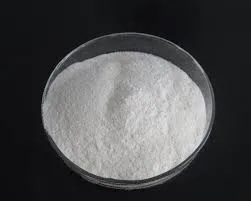
Dec . 18, 2024 20:15 Back to list
hpmc viscosity grades
Understanding HPMC Viscosity Grades A Comprehensive Guide
Hydroxypropyl Methylcellulose (HPMC) is a versatile cellulose ether that is widely used in various industries, including food, pharmaceuticals, cosmetics, and construction. One of the critical factors influencing its performance in applications is its viscosity, which is determined by the degree of substitution and molecular weight of the HPMC polymer. Understanding HPMC viscosity grades is essential for formulators to choose the right product for their specific applications.
What is HPMC?
HPMC is a non-ionic polymer derived from natural cellulose. It is modified with hydroxypropyl and methyl groups, which enhance its solubility in water and improve its functional characteristics. Because of these enhancements, HPMC exhibits a variety of properties such as thickening, binding, film-forming, and emulsifying capabilities.
Viscosity Classification
HPMC can be classified into various viscosity grades, which are typically indicated by a number followed by cps, referring to centipoise, a unit of viscosity measurement. The viscosity grades reflect the solution's thickness when HPMC is dissolved in water and can range from low to high viscosity.
- Low Viscosity Grades These grades (e.g., HPMC 1000 cps) offer minimal thickening and are often utilized in applications requiring lower levels of viscosity, such as liquid pharmaceuticals, certain food products, and cosmetic formulations where a lightweight feel is desired.
- Medium Viscosity Grades Medium viscosity grades (e.g., HPMC 4000 cps to 8000 cps) provide a balanced performance and are commonly used in applications like adhesives, paints, and food coatings, where moderate thickness and improved stability are needed.
- High Viscosity Grades High viscosity HPMC (e.g., HPMC 15000 cps and above) exhibits excellent thickening properties, making it ideal for applications requiring substantial viscosity, such as gels and creams in personal care products, as well as construction materials like tile adhesives and self-leveling compounds.
hpmc viscosity grades

Choosing the Right Viscosity Grade
Selecting the appropriate HPMC viscosity grade depends on several factors, including the intended application, the desired texture, and the specific performance requirements. Here are key considerations to guide your choice
1. Application Requirements Assess the requirements specific to your formulation. For example, if you are developing a gel-based cosmetic product, a high viscosity grade may be necessary to achieve the desired consistency. Conversely, for a beverage, a low viscosity grade may be more suitable.
2. Temperature and pH Stability Different HPMC grades exhibit varying degrees of stability under different temperatures and pH levels. Ensure to select a viscosity grade that maintains its properties under the conditions your product will encounter.
3. Compatibility with Other Ingredients It's crucial to consider the formulation as a whole. Ensure that the chosen HPMC grade is compatible with other components in your formula, such as preservatives, active ingredients, and emulsifiers.
4. Regulatory Compliance For food and pharmaceutical applications, it’s imperative to choose HPMC grades that comply with regulatory standards set by organizations like the FDA and EU. Always check for certifications and quality assurances.
Conclusion
In summary, HPMC viscosity grades play a significant role in determining the performance of products across various industries. By understanding the differences among low, medium, and high viscosity grades, formulators can make informed choices that enhance product performance and meet consumer expectations. When selecting HPMC for your application, always consider the specific requirements, compatibility with other ingredients, and compliance with regulatory standards to achieve optimal results. Whether in pharmaceuticals, food, or cosmetics, the right viscosity can make all the difference in the final product.
-
Versatile Hpmc Uses in Different Industries
NewsJun.19,2025
-
Redispersible Powder's Role in Enhancing Durability of Construction Products
NewsJun.19,2025
-
Hydroxyethyl Cellulose Applications Driving Green Industrial Processes
NewsJun.19,2025
-
Exploring Different Redispersible Polymer Powder
NewsJun.19,2025
-
Choosing the Right Mortar Bonding Agent
NewsJun.19,2025
-
Applications and Significance of China Hpmc in Modern Industries
NewsJun.19,2025







